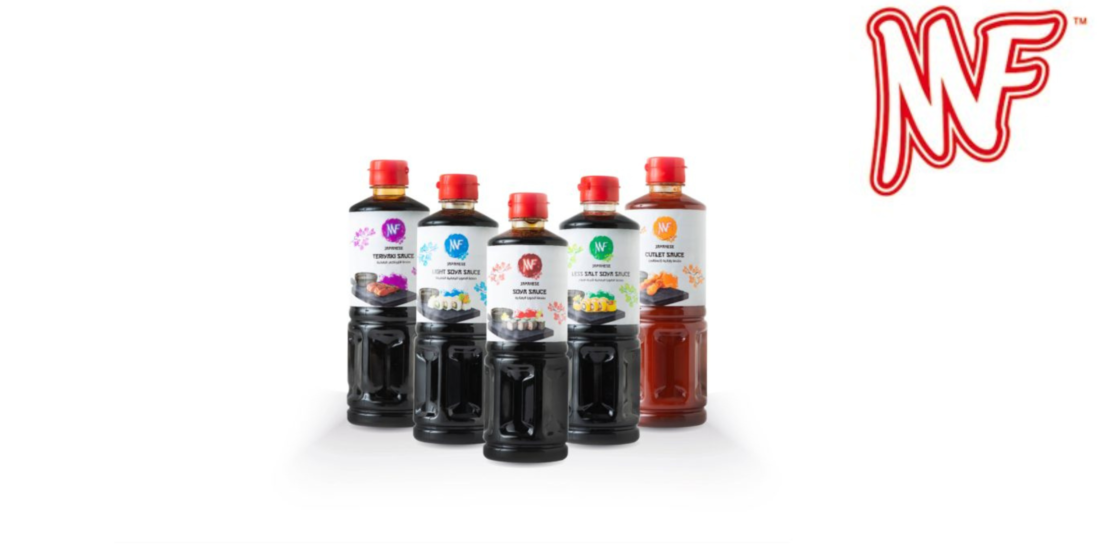- May 11, 2023
- Posted by: MF-FOOD
- Category: MF Japanese Sauces

Many dishes in Japanese cuisine consist of rice or noodles, eaten with vegetables and a source of protein, giving the impression that the cuisine is relatively simple and basic. Of course, as anyone who has tried Japanese food will be able to show, this severely undersells the nation’s approach to cooking. While many Japanese foods might have a variety of delicate flavors, a few basic things must be present for the dish to be properly appreciated. The Japanese sauce will add an additional touch to the dish. Here we will look in detail at the Japanese sauce.
What is Japanese Sauce?
A common ingredient in Japan is referred to as sauce. Tonkatsu sauce is a thick, brown sauce frequently served in Japanese cuisine with breaded fish, pig, or chicken cutlets. In Japan, this sauce is used in various meals, including stews, marinades, and burgers. In fact, you may have already had this enigmatic sauce if you occasionally eat at Japanese eateries. You could even describe it as a thicker, slightly sweeter form of Worcestershire sauce or a barbecue sauce made in the Japanese way. When buying Japanese sauce, looking for the Japanese Sauce Manufacturing Company‘s reputation is vital to getting quality sauce.
The History of Japanese Sauce
Japanese sauce has been a part of Japanese cuisine and culture since the late 19th century, which may interest you if you prefer to learn a little about the food you consume. It was initially marketed as a kind of soy sauce, but it didn’t become well-known until it was reformulated as a distinct kind of sauce. This happened soon after World War II when Japanese cuisine in many locations became more Westernised. The sauce is now used in recipes for everything, so most prepare to buy it from the Japanese Sauce Manufacturing Company to use it for stir-fried noodles to soup bases.
Benefits
Soy sauce is a key component in Japanese cuisine due to its many advantages. Soy sauce has many functions, from enhancing flavors to promoting health.
Health Benefits
A fermented food called soy sauce has many health advantages. It is an excellent source of nourishment since it has antioxidants, protein, and vitamin K. Isoflavones, which are present in soy products, can reduce cholesterol and lessen menopausal symptoms. Soy sauce is a better alternative to table salt because, despite its salty flavor, it has less sodium.
Flavor and Color Enhancers
It is well known that soy sauce can improve the flavor of many different foods. It gives food color and can be used as a dipping sauce or spice at the table.
Deodorizer and Bacteria Inhibitor
Sashimi and sushi are blended with soy sauce to cover the smell of raw fish and enhance the ambiance at sushi restaurants. Additionally, it prevents the development of bacteria, making it a crucial component in keeping fish safe for food.
Antioxidant Properties
An organic antioxidant found in soy sauce is called shoyu flavone. Your body is shielded from free radical damage by these organic antioxidants. Soy sauce’s antioxidants can mitigate the negative consequences of inflammation. In addition, research findings show that dark soy sauce reduces lipid peroxidation, a condition in which free radicals assault lipids.
Promotes Digestion
A study found that moderation in Japanese soy sauce, or Shoyu, can promote healthy digestion by helping the stomach break down food properly. By increasing the release of gastric juice, soy sauce also aids digestion. Because it is fermented, Japanese-style soy sauce supports the development of healthy bacteria in the digestive tract.
Anti-Allergenic Properties
Strong anti-allergic properties are provided by the shoyu polysaccharides created during the fermentation process necessary to generate soy sauce. According to a study, soy sauce has much potential for treating allergies because those who consumed it showed more improvement in their symptoms. But some people are allergic to soy sauce.
How to Store?
Soy sauce bottles should be kept at room temperature until they are opened. The best way to store soy sauce after it has been opened is up for conversation. For optimum freshness, store food in the refrigerator immediately after opening. As followed by the Soya Sauce Manufacturing Company details, most soy sauces can be kept up to three months after opening. However, checking the label for storage guidelines from the Manufacturing Company is always advisable.
Japanese Soy Sauce
Here are the available Japanese soy sauces you can look for:
Tamari
As a miso by-product and the closest to the original soy sauce among the soy sauce varieties, Tamari Joyu is special. It has a significantly more robust umami flavor and a thicker consistency than most soy sauces and is almost entirely manufactured from soybeans. Wheat is either not utilized at all or is used rarely. Tamari sauce labels must be carefully read because some manufacturers continue to use trace amounts of wheat. Due to its thicker and viscous texture, tamari is best used as a dipping sauce or glaze and often has a salt concentration slightly.
Dark Soy Sauce
The most popular kind of Japanese soy sauce is known as Kikuchi or dark soy sauce. If you have ever tried Kikkoman soy sauce or Kikkoman Organic Soy Sauce, you have had dark soy sauce. Due to its strong umami flavor, many people believe this sort of soy sauce to be the greatest. It works well with anything, even fried rice and noodles.
Light Soy Sauce
Usukuchi Shoyu, or light soy sauce, is older than the darker Kikuchi yet is only a little modification of it. Compared to regular soy sauce, it has a milder flavor and more nuanced umami. The subtlety is mostly attributable to the amazake and extra salt additions, which can halt fermentation. Usukuchi is perfect for Kansai cuisine, recipes that call for a mild flavor, and dishes where the cook wants to avoid darkening the color of the food.
White Soy Sauce
White soy sauce is lighter in color and has an even milder flavor than light soy sauce. Restaurants are more likely to have it than less likely homes. White soy sauce gets its distinctive color and flavor from using more wheat than soy. Any recipe that requires regular Japanese soy sauce can be used with white soy sauce, but you should anticipate a milder flavor.
Final Thoughts
If the dish is to be delicious, it is best to use Japanese sauce by considering its usage with the Soya Sauce Manufacturing Company. The mentioned are the clear advice you could ever get about Japanese sauce, so you can view this to prepare the best dish.
